Alwar Museum is yet another fascinating museum located in the charming city of Alwar in Rajasthan. It contains a rich collection of many historical artworks and relics. Located in the Grand City Palace, this museum provides tourists with a detailed account of Alwar’s royal heritage, with exhibits of weapons, manuscripts, paintings, and sculptures, amongst others. Whether you are a history lover or a person waiting to get a glimpse of royal Rajasthan, the Alwar Museum is perfect for the awesome trip.
Location Of Alwar Museum
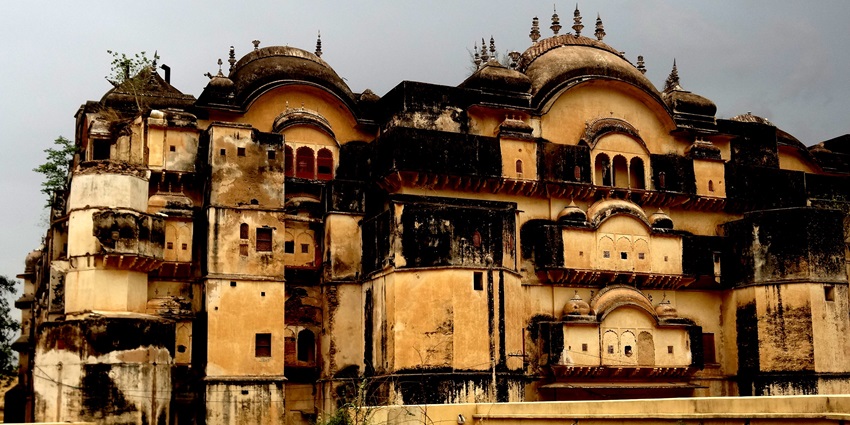
Photo: Thisboytraveller / Wikimedia Commons
The Alwar Museum is inside the City Palace, which is in the central part of Alwar. It lies beside the lovely Siliserh Lake and the picturesque Aravalli hills, which give tourists a mix of history and natural beauty. It serves as an important site for tourists who visit the city of Alwar, and it is strategically located in a place that acts as a strong base for accessing other areas of interest in the city.
Suggested Read: Top Things To Do In Alwar To Experience The Rajasthani Culture
How To Reach Alwar Museum
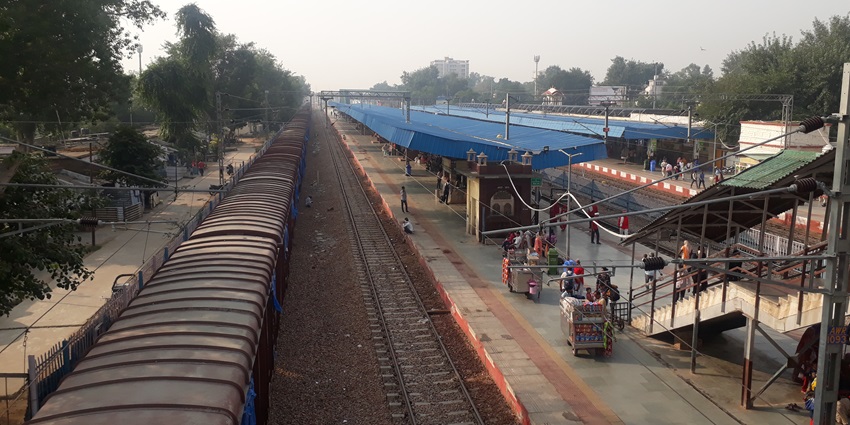
Photo: Pinakpani / Wikimedia Commons
By Road: Alwar is well-connected by road and can be easily reached from major cities like Delhi (160 km), Jaipur (150 km), and Gurgaon (140 km). Regular buses and taxis are available from these cities to Alwar.
By Rail: Alwar Junction is the nearest railway station, located about 2 km from the City Palace. Trains from Delhi, Jaipur, and other major cities stop at Alwar Junction.
By Air: The nearest airport is Jaipur International Airport, which is approximately 162 km from Alwar. From the airport, travellers can hire a taxi or take a bus to reach Alwar.
Places To Visit In And Around Alwar Museum
Discover the rich history and vibrant culture of Alwar with a visit to the Alwar Museum and its nearby attractions.
1. Bala Quila (Alwar Fort)
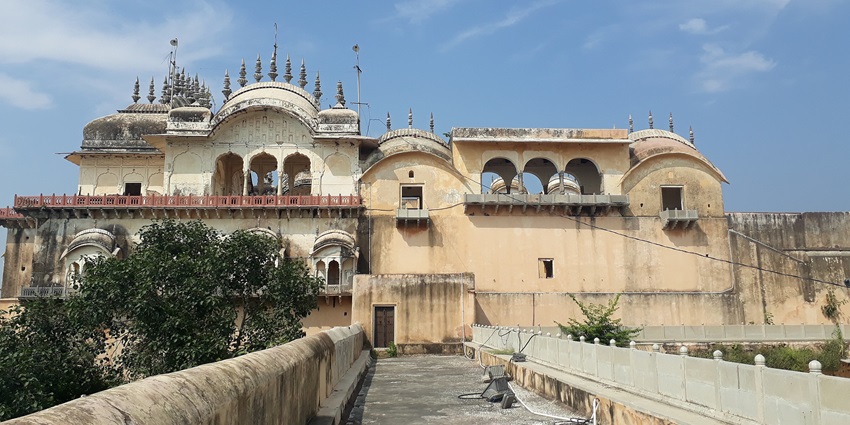
Photo: Pinakpani / Wikimedia Commons
Bala Quila is a huge fort situated on 300-meter-high land that once housed Alwar’s shield. This fort provides a bird’s eye view of the city and the Aravalli hill range that surrounds the city. The fort extends to a 5 KM length and has six gates, which include Jai Pol, Suraj Pol, Laxman Pol, Chand Pol, Krishan Pol, and Andheri Gate, with different historical references. Within the enclosures of the fort, there are many remains of palace complexes, temples, and tanks. Mughal rulers used the fort, and it is believed that Babur, the first Mughal Emperor of India, camped here.
Timings: 10 AM – 5 PM
Entry Fee: ₹20 for Indians, ₹100 for foreign nationals
Suggested Read: Explore The Best Places To Visit Near Alwar
2. Sariska National Park
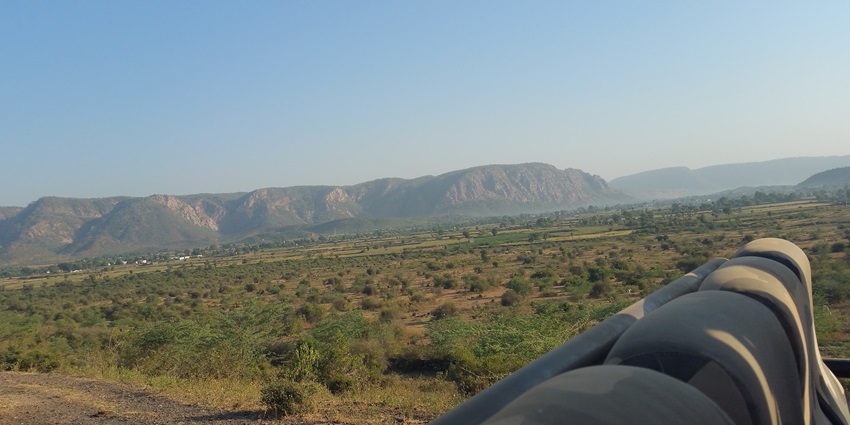
Photo: Rprishi / Wikimedia Commons
Stretched over an area of 866 sq. km, Sariska National Park is another significant tiger preserve of the country. Apart from tropical tigers, there are other varieties of wild animals, such as leopards, hyenas, wild boars, and birds like peacocks and eagles. The park has dry deciduous forests, scrub-thorn vegetation and grasslands. Though Sariska is predominantly a wildlife sanctuary, it is also historically important, with sites like the Kankwari Fort temples. Some of the tours that the park provides include jeep safaris and canter safaris, during which tourists get to interact with the wild and see the animals up close in their natural habitat.
Timings: 6:30 AM – 10:30 AM, 2:30 PM – 6:30 PM (Safari Timings)
Entry Fee: ₹80 for Indians, ₹470 for foreign nationals
3. Siliserh Lake Palace
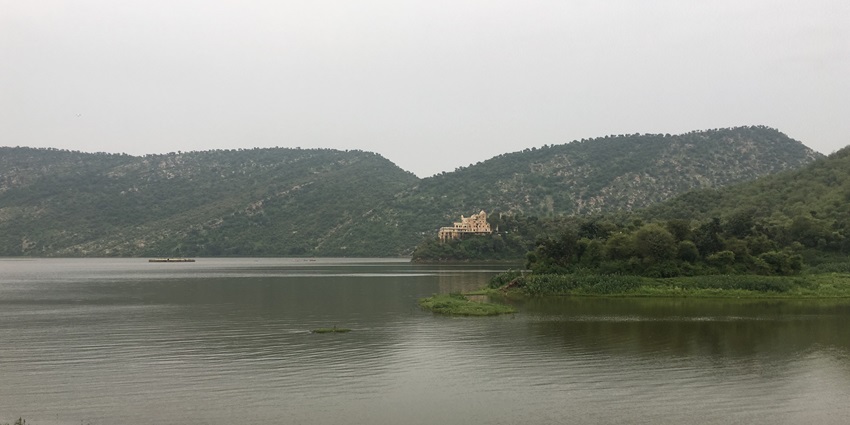
Photo: VkVikas3 / Wikimedia Commons
This beautiful palace was constructed in 1845 by Maharaja Vinay Singh for his queen Shila, and it sits on the shores of the beautiful Siliserh Lake. Now serving as a heritage hotel, the palace is designed to accommodate guests who rent the royal rooms, which overlook the quiet waters of the lake. The lake itself is serene and a good place to have a picnic, take a boat ride, or go for nature walks. It is a perfect place for tourists, especially photographers and those who adore the beauty of nature.
Timings: Open all day (for hotel guests)
Entry Fee: Free for visitors
Suggested Read: Top Water Parks In Alwar To Ride The Wave Of Fun
4. Moosi Maharani ki Chhatri
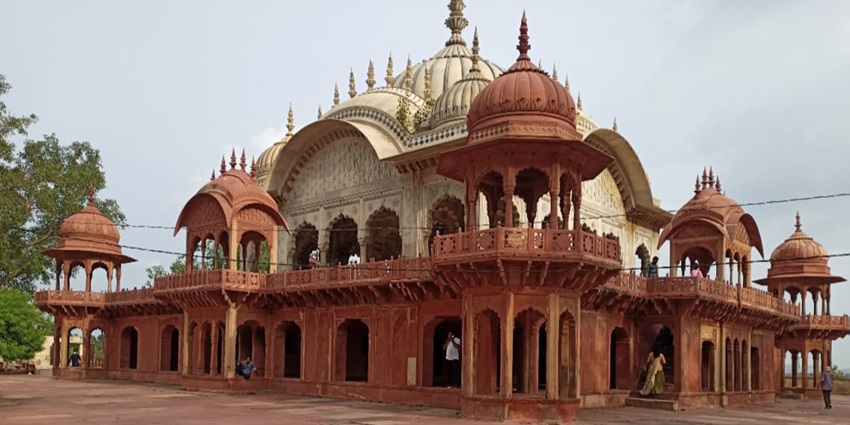
Photo: Sahil Kansal / Wikimedia Commons
This cenotaph was constructed in the early 19th century and is dedicated to Maharaja Bakhtawar Singh and his queen Moosi. This two-storey massive building exhibits typical Rajput structural design, having red stone on the ground floor & elaborate white marble domed building on the first floor. The filigree that is carved out on the walls of buildings and the fine pieces of frescos also indicate the high works of art. Adjacent to the city palace, this chhatri provides an oasis of calm and a glimpse into the faith and opulence that defined the royal family of Alwar.
Timings: 8 AM – 7 PM
Entry Fee: Free
5. Vijay Mandir Palace
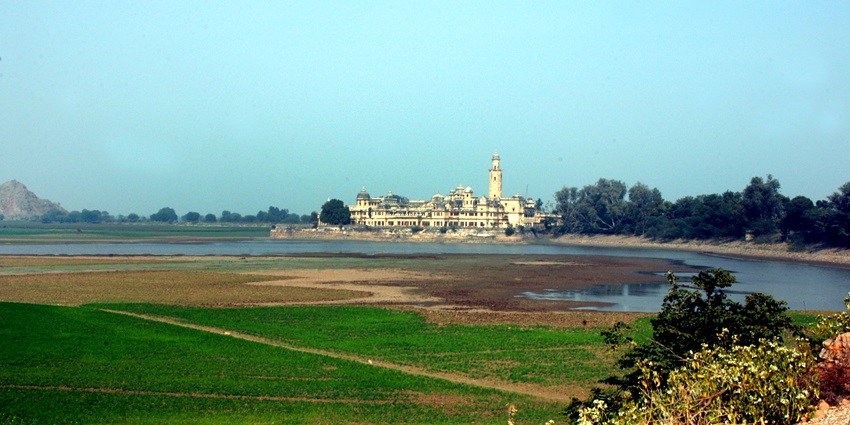
Photo: Tapish2409 / Wikimedia Commons
The Vijay Mandir Palace is an architectural masterpiece built by Maharaja Jai Singh in 1918. The palace, which is a fusion of Mughal and Rajput architecture, consists of 105 beautifully designed rooms. Though the palace is not open to the public, the picturesque surroundings and the tranquil Vijay Sagar Lake offer visitors an opportunity to enjoy a peaceful outing. The palace is surrounded by lush gardens, making it a perfect place for picnics. On special occasions, the palace is sometimes lit up, adding to its majestic appearance. Despite restricted entry, the palace’s charm and historical importance make it worth a visit.
Timings: 9 AM – 6 PM (only exterior views allowed)
Entry Fee: Free
Suggested Read: Places To Visit In Alwar
Where To Stay
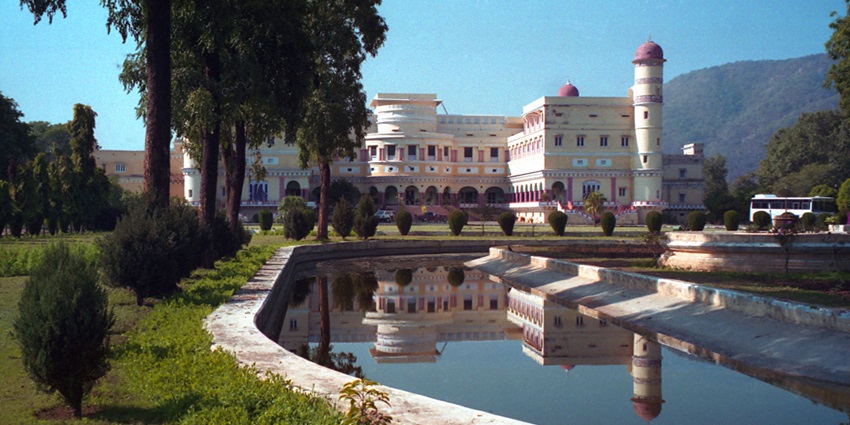
Photo: Dan Lundberg / Wikimedia Commons
Alwar offers a wide range of accommodation options, from budget hotels to luxurious heritage properties. For a royal experience, staying at the Neemrana Fort Palace or the Siliserh Lake Palace offers a unique blend of history and comfort. Budget hotels are also available near the city centre for more affordable options.
Where To Eat
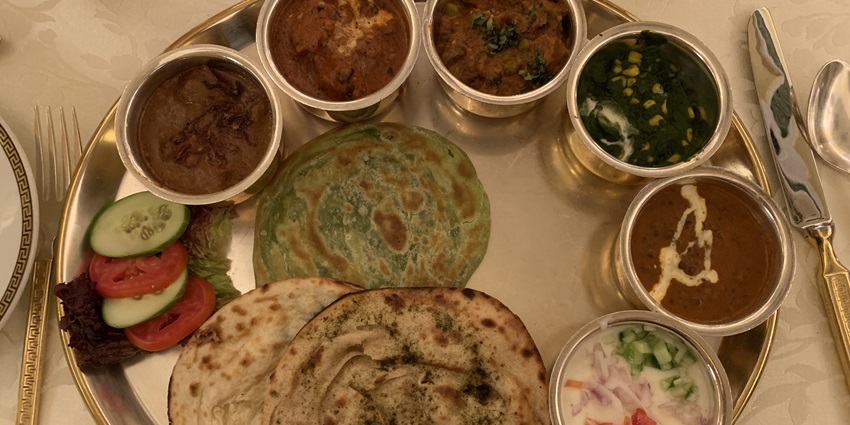
Photo: Chainwit. / Wikimedia Commons
Alwar has numerous dining options, from street food stalls to upscale restaurants. Local eateries near the City Palace serve traditional Rajasthani dishes such as dal bati churma and ghevar. For a more refined dining experience, restaurants like Prem Pavitra Bhojnalaya and Inderlok offer both local and continental cuisines.
Suggested Read: Go Camping In Alwar
Best Time To Visit Alwar Museum
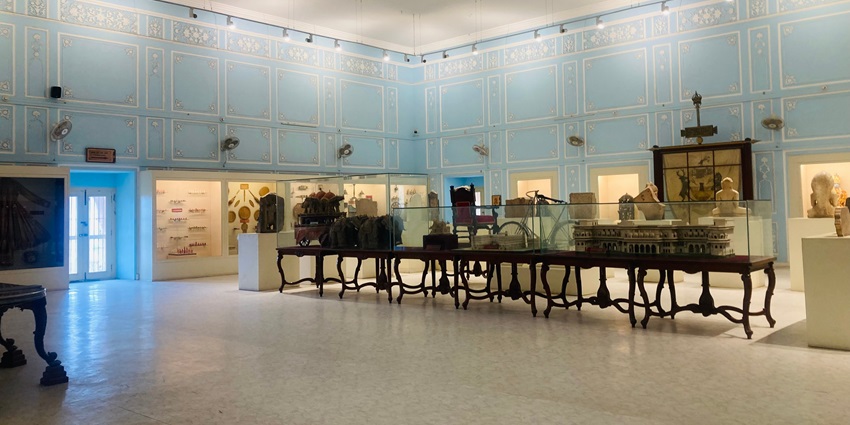
The best time to visit the Alwar Museum is during the winter months, from October to March when the weather is pleasant and ideal for sightseeing. The cooler temperatures make exploring outdoor attractions like Sariska National Park and Alwar Fort more comfortable.
Other Factors To Consider
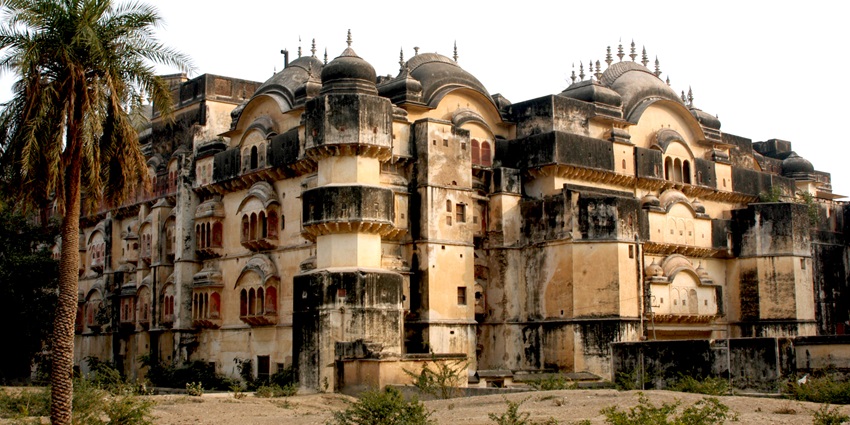
Photo: Tapish2409 / Wikimedia Commons
The average trip cost to Alwar Museum including transportation, accommodation, meals, and sightseeing, can range from ₹3,000 to ₹6,000 per person for a weekend getaway. Luxury stays and experiences might push the budget higher.
Travel Tips
- If planning to visit Sariska National Park, booking safaris in advance is recommended, especially during peak season.
- Even though Rajasthan is known for its heat, winters in Alwar can get chilly, especially in the evenings.
- Always carry a bottle of water while sightseeing, as temperatures can rise during the day.
Suggested Read: Alwar Forts
Alwar Museum is not only a window into Rajasthan’s rich royal history but also a gateway to exploring Alwar’s many cultural and natural wonders. Its collection of ancient artefacts and art offers a fascinating glimpse into the region’s past, making it a must-visit for history enthusiasts. Beyond the museum, Alwar boasts stunning landscapes, from picturesque lakes to historic forts and serene natural settings. Plan your trip with TripXL today!
Cover Photo: Tpsn98290 / Wikimedia Commons


 WhatsApp
WhatsApp
 Twitter
Twitter









